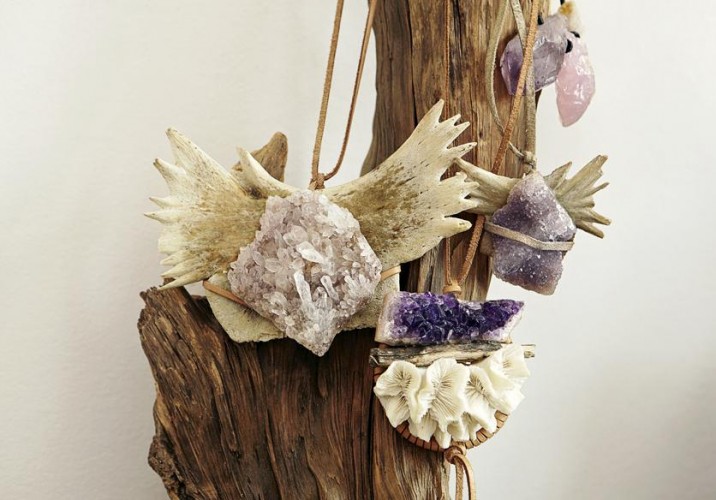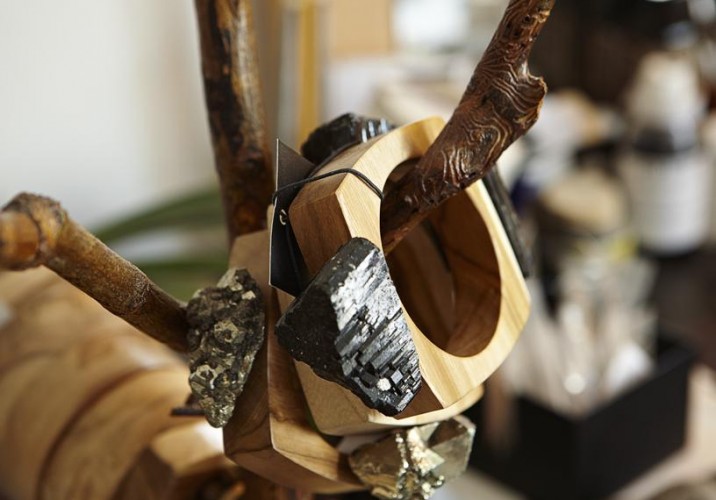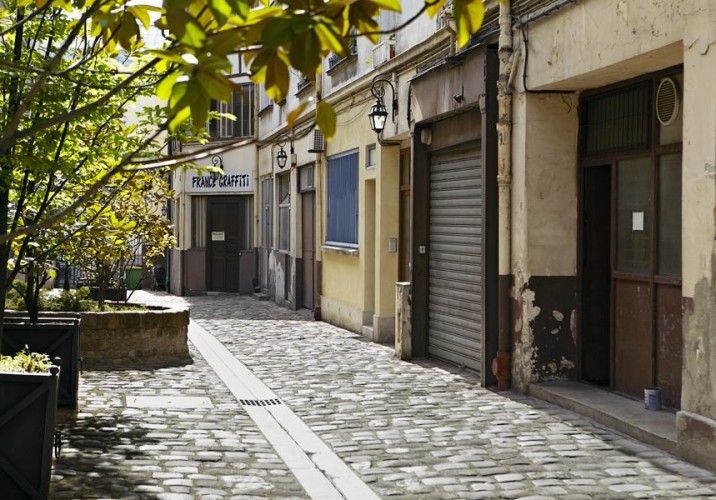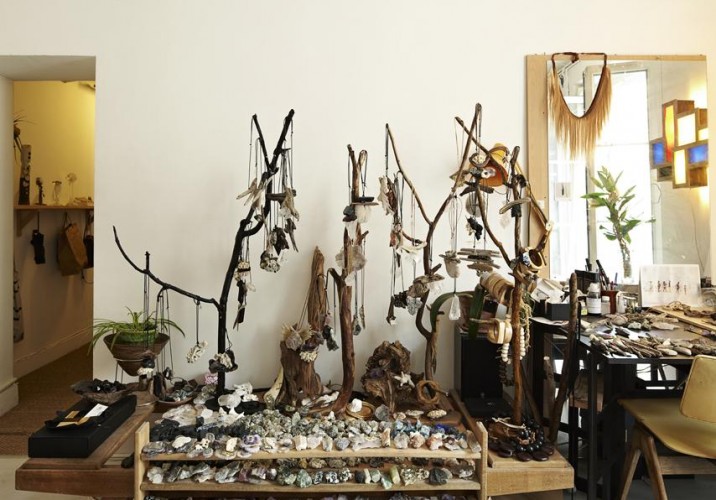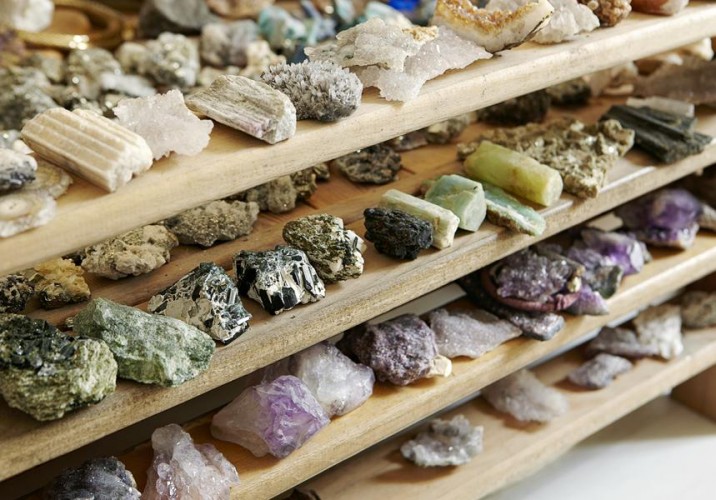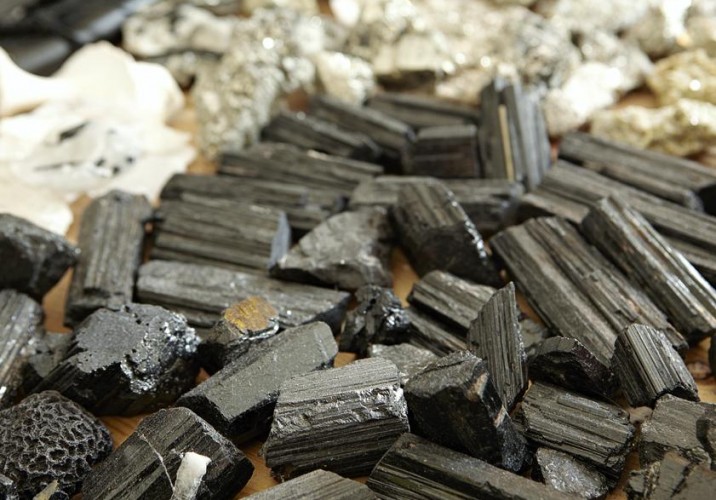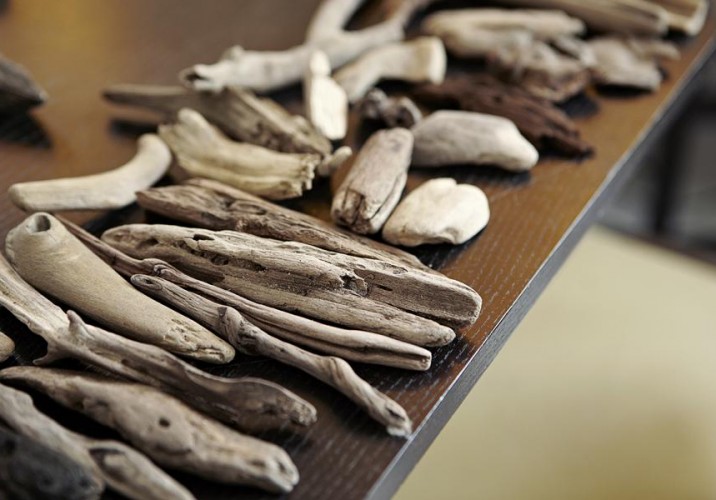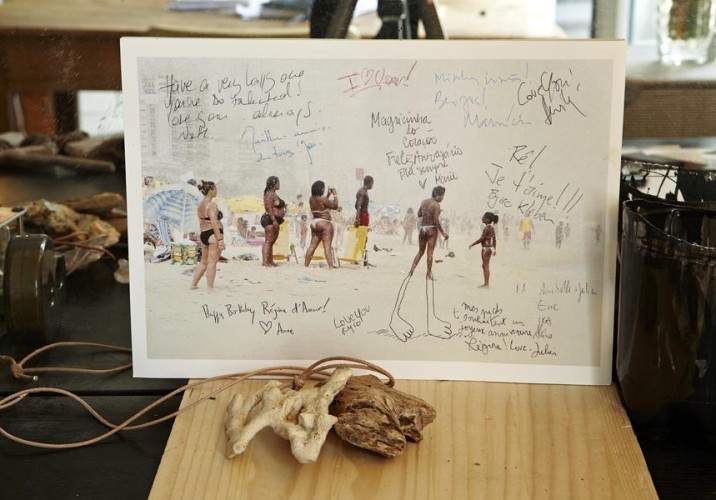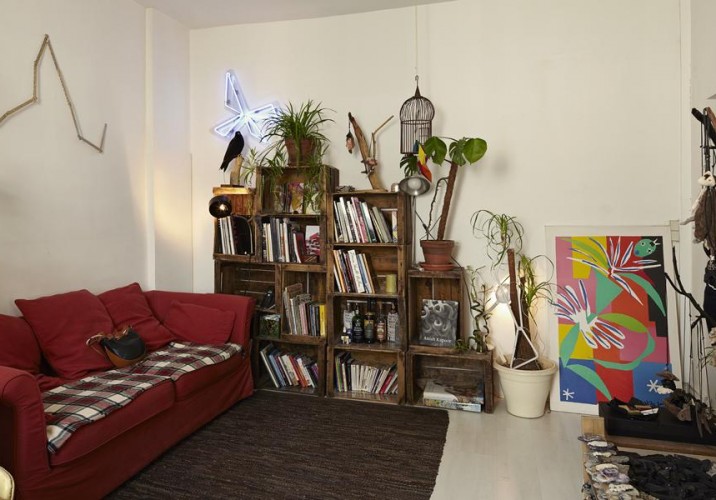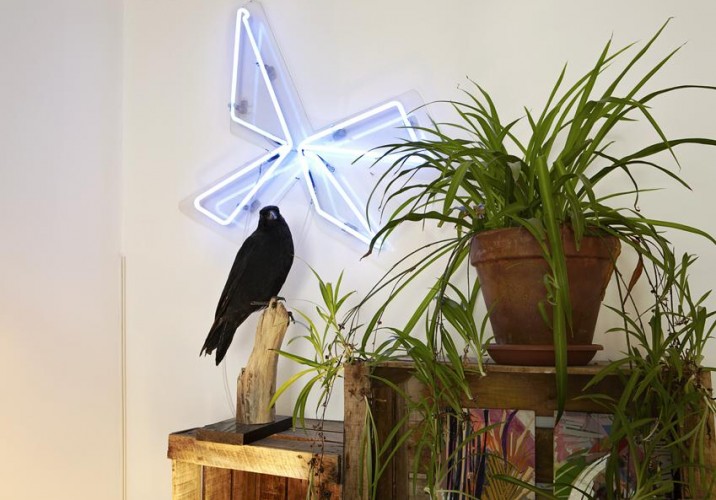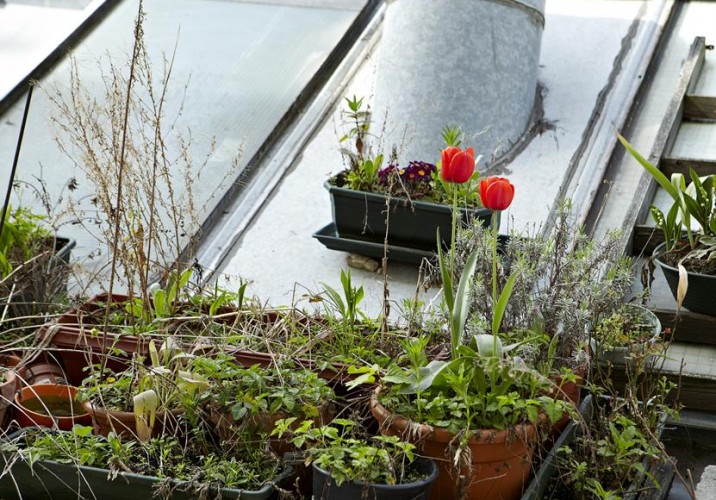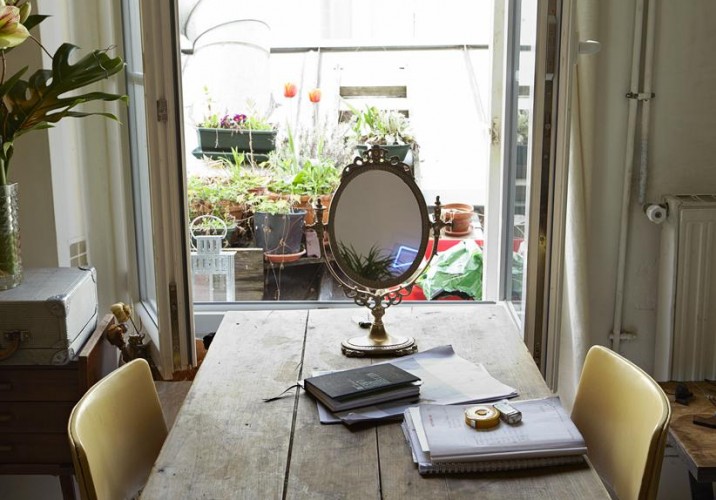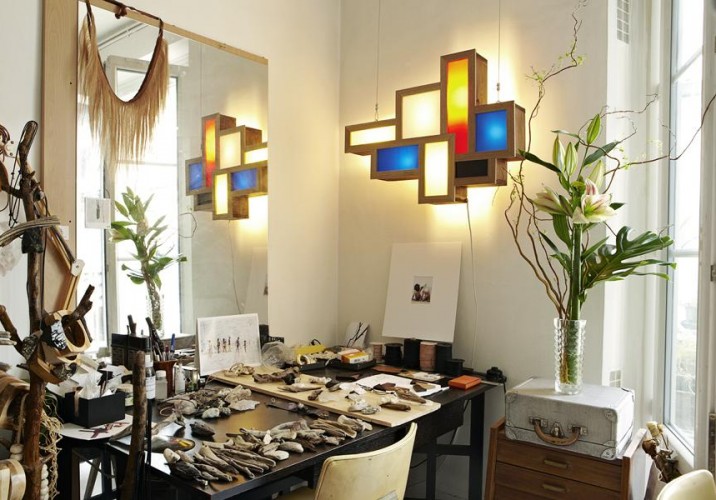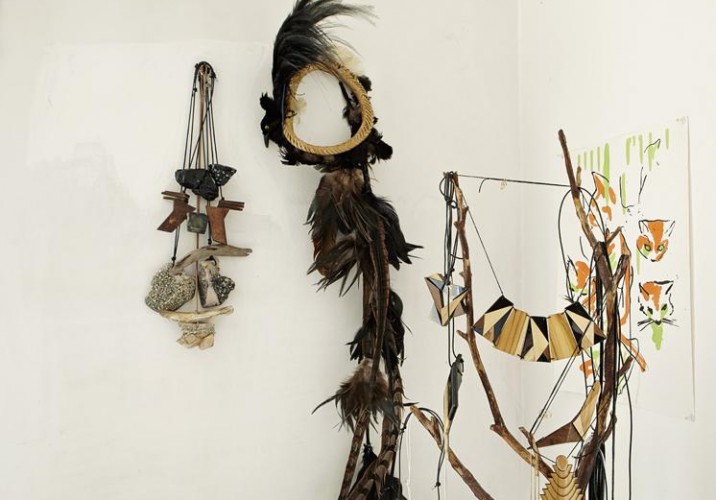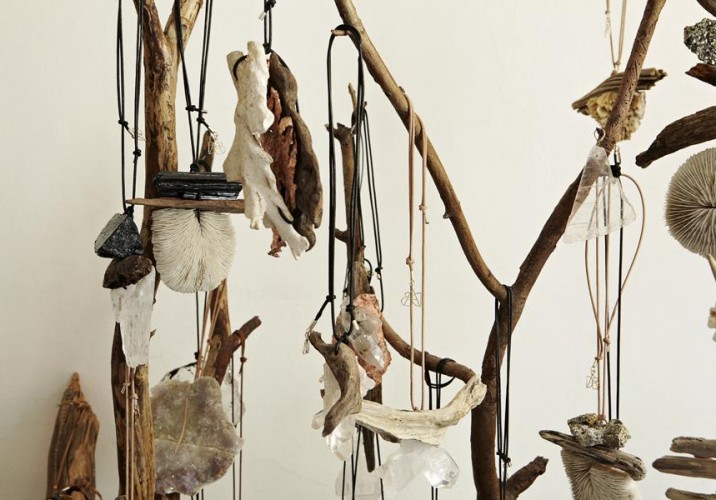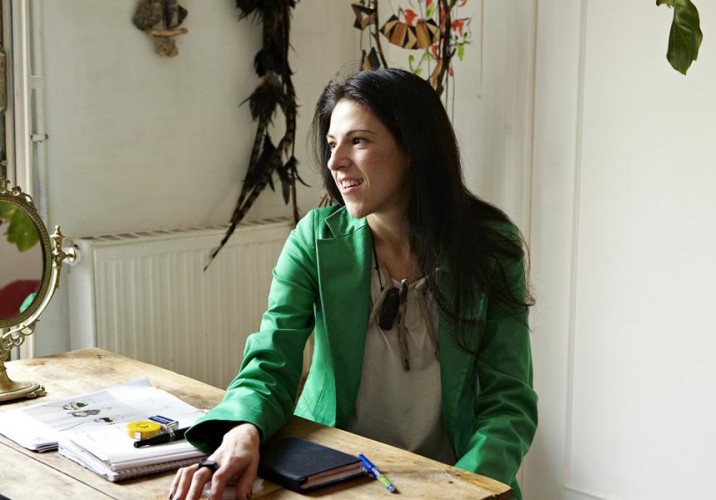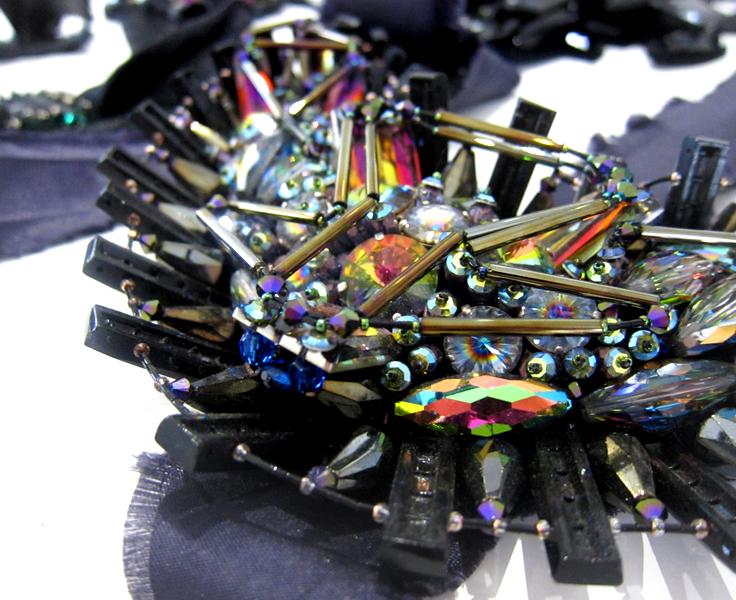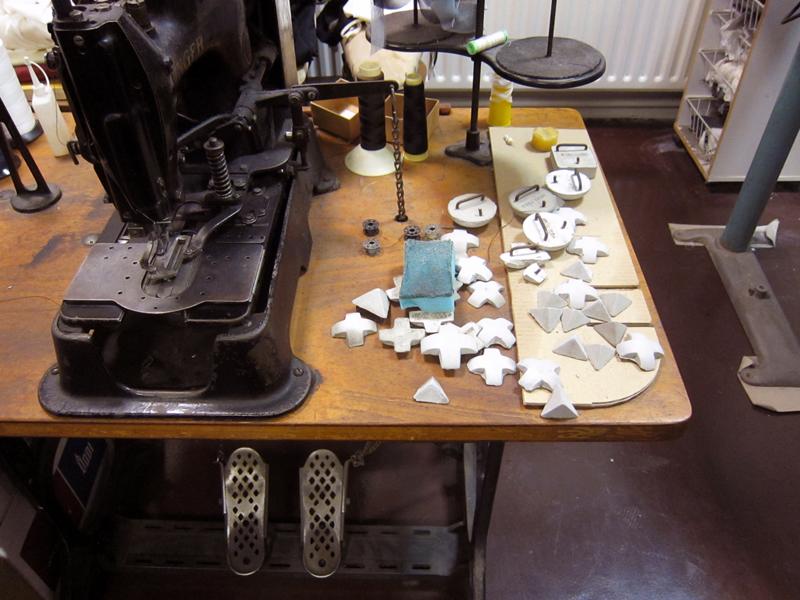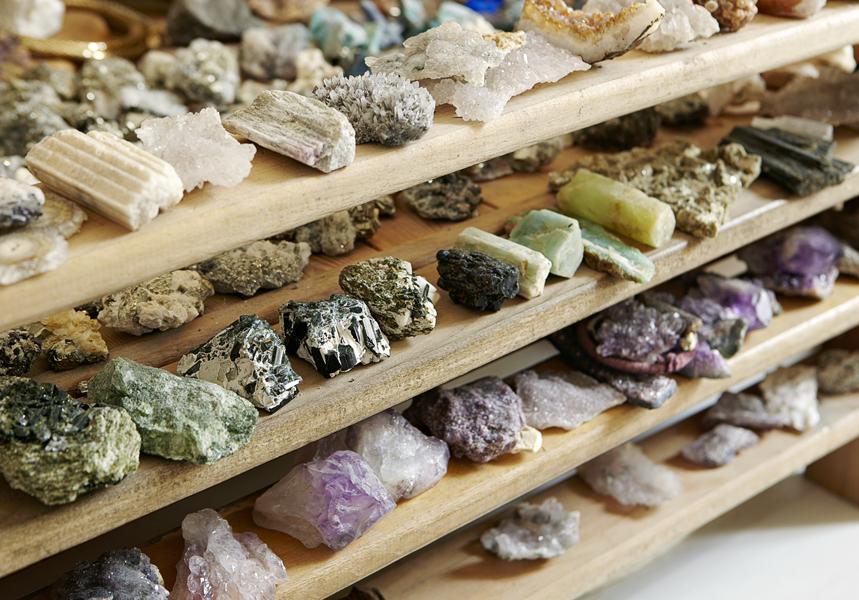
12.13.11
Studio Visit
Regina Dabdab, Jewelry Designer
PHOTOS BY POUL OBER
“Paris is so beautiful, but it’s also way too cold,” says jewelry maker Regina Dabdab of the city she’s called home for the past six years, referring to its disposition rather than its weather. Despite generations of fashion designers adopting Parisian women as muses — Yves Saint-Laurent had Loulou de La Faliase; Balenciaga loves a classic Françoise Hardy silhouette — for Dabdab, their no-nonsense élan is far too restrained, and too much in contrast with the raw and untamed ethos of her native Brazil. It’s the latter qualities, combined with a strong sense of geometry, Dabdab tries to imbue her work with. “I don’t design for the reserved Parisian woman,” she says. “I think of home.”
Born and raised in bustling São Paulo, Dabdab spent her childhood escaping the city’s heat by combing the local beaches for treasures, or visiting her grandfather at his stone shop, which sold pyrite, amethyst, emeralds, and other rare amulets. Not only does she continue to find solace in her hometown’s melting-pot culture, returning there for inspiration three times a year, she still culls its natural materials for use in the production of her eponymous jewelry line. Her chunky bracelets and necklaces are sculpted from an eclectic mix of Brazilian driftwood, coral, shells, animal bones, semi-precious stones, and horns; some of them are so laden with uncut stones and natural curiosities that they weigh in at almost two pounds. Dabdab’s manipulation of those elements into visually harmonic compositions — what she calls “the marriage of materials” — is partly informed by the principals of Constructivism: Kinetic, non-representational shapes and geometric abstractions with a focus on spatial presence.
Sight Unseen visited Dabdab at her studio in Paris, a spacious apartment that also serves as her showroom and home. She works around the clock, aiming to make two pieces a day and designating one day each week to the arduous process of drilling holes into her sprawling collection of stones. This, she says, is the most daunting aspect of production: “I’m always having trouble with stones breaking or exploding. Surprisingly, it’s a fragile material.” She hopes to someday get into even messier creative pursuits, like sculpture or silversmithing, and has plans to eventually return to Brazil and buy a place on the beach. But for now, she’s content to focus on her line. “I need to grow up, but I don’t really want to,” Dabdab says. “I want to make jewelry forever, and I think that will keep me young.”
